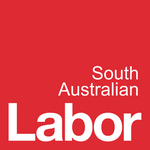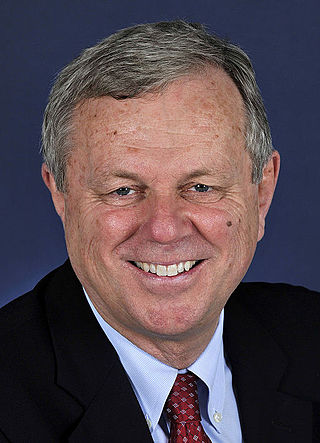
Michael David Rann,, is an Australian former politician who was the 44th premier of South Australia from 2002 to 2011. He was later Australian High Commissioner to the United Kingdom from 2013 to 2014, and Australian ambassador to Italy, Albania, Libya and San Marino from 2014 to 2016.

James Desmond Corcoran AO was an Australian politician, representing the South Australian Branch of the Australian Labor Party. He was the 37th Premier of South Australia, serving between 15 February 1979 and 18 September 1979. He also served as the 1st Deputy Premier of South Australia in 1968 and again from 1970 to 1979.

David Oliver Tonkin AO was an Australian politician who served as the 38th Premier of South Australia from 18 September 1979 to 10 November 1982. He was elected to the House of Assembly seat of Bragg at the 1970 election, serving until 1983. He became the leader of the South Australian Division of the Liberal Party of Australia in 1975, replacing Bruce Eastick. Initially leading the party to defeat at the 1977 election against the Don Dunstan Labor government, his party won the 1979 election against the Des Corcoran Labor government. Following the 1980 Norwood by-election the Tonkin government was reduced to a one-seat majority. His government's policy approach combined economic conservatism with social progressivism. The Tonkin Liberal government was defeated after one term at the 1982 election by Labor led by John Bannon.
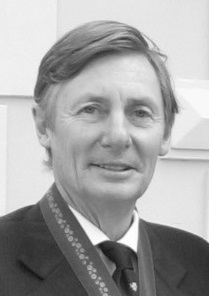
John Charles Bannon was an Australian politician and academic. He was the 39th Premier of South Australia, leading the South Australian Branch of the Australian Labor Party from a single term in opposition back to government at the 1982 election.
Lynn Maurice Ferguson Arnold, AO is an Anglican priest and a former Australian politician, who represented the South Australian Branch of the Australian Labor Party, serving as Premier of South Australia between 4 September 1992 and 14 December 1993, during the 11 years of Labor government which ended in a landslide defeat of his government at the 1993 election.

The leader of the Australian Labor Party is the highest political office within the federal Australian Labor Party (ALP). Leaders of the party are chosen from among the sitting members of the parliamentary caucus either by members alone or with a vote of the parties rank-and-file membership. The current leader of the Labor Party, since 2019, is Anthony Albanese, who has served as the prime minister of Australia since 2022. There have been 21 leaders since 1901 when Chris Watson was elected as the inaugural leader following the first federal election.

Jay Wilson Weatherill is a former Australian politician who was the 45th Premier of South Australia, serving from 21 October 2011 until 19 March 2018. Weatherill represented the House of Assembly seat of Cheltenham as a member of the South Australian Labor Party from the 2002 election to 17 December 2018, when he retired.
This is a Timeline of South Australian history.
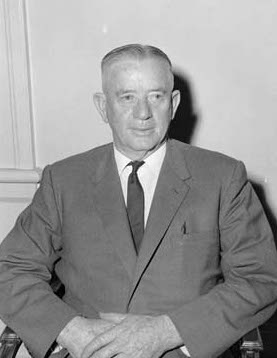
State elections were held in South Australia on 6 March 1965. All 39 seats in the South Australian House of Assembly were up for election. The incumbent Liberal and Country League led by Premier of South Australia Thomas Playford IV, in power since 1938, was defeated by the Australian Labor Party led by Leader of the Opposition Frank Walsh.

Geoffrey Graeme Brock is an Australian politician. He is an Independent member in the South Australian House of Assembly, representing the seat of Stuart since the 2022 South Australian state election. Prior to this, he represented the seat of Frome from the 2009 Frome by-election until a redistribution leading up to the 2022 state election.

Steven Spence Marshall is an Australian politician who served as the 46th premier of South Australia between 2018 and 2022. He has been a member of the South Australian Division of the Liberal Party of Australia in the South Australian House of Assembly since 2010, representing the electorate of Dunstan.
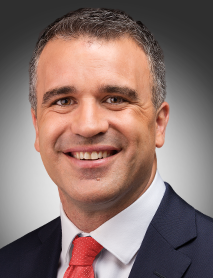
Peter Bryden Malinauskas is an Australian politician serving as the 47th and current premier of South Australia since March 2022. He has been the leader of the South Australian branch of the Australian Labor Party (ALP) and a member of the House of Assembly (MHA) for the division of Croydon since April 2018. He was previously the Leader of the Opposition from 2018 until he led his party into government in the 2022 state election.

Zoe Lee Bettison is an Australian politician representing the South Australian House of Assembly seat of Ramsay for the South Australian Branch of the Australian Labor Party since the 2012 Ramsay by-election.

The 2018 South Australian state election to elect members to the 54th Parliament of South Australia was held on 17 March 2018. All 47 seats in the House of Assembly or lower house, whose members were elected at the 2014 election, and 11 of 22 seats in the Legislative Council or upper house, last filled at the 2010 election, were contested. The record-16-year-incumbent Australian Labor Party (SA) government led by Premier Jay Weatherill was seeking a fifth four-year term, but was defeated by the opposition Liberal Party of Australia (SA), led by Opposition Leader Steven Marshall. Nick Xenophon's new SA Best party unsuccessfully sought to obtain the balance of power.
John David "Jack" Wright was an Australian politician and Deputy Premier of South Australia under John Bannon from 1982 to 1985. Wright represented the House of Assembly seat of Adelaide for the South Australian Branch of the Australian Labor Party from 1971 to 1985. Wright was made an Officer of the Order of Australia (AO) in the 1986 Australia Day Honours for "service to politics, industrial relations and the community".

The Rann government was the state executive government of South Australia led by Premier of South Australia Mike Rann of the South Australian Branch of the Australian Labor Party (ALP) from 2002 to 2011.
The Weatherill Ministry was the 72nd Ministry of the Government of South Australia, led by Jay Weatherill of the South Australian Branch of the Australian Labor Party. It commenced on 21 October 2011, when Weatherill succeeded Mike Rann as Premier and Labor leader.

The Liberal Party of Australia (South Australian Division), commonly known as the South Australian Liberals, is the South Australian Division of the Liberal Party of Australia. It was formed as the Liberal and Country League (LCL) in 1932 and became the South Australian Division of the Liberal Party when the Liberal Party was formed in 1945. It retained its Liberal and Country League name before changing to its current name in 1974. It is one of two major parties in the bicameral Parliament of South Australia, the other being the Australian Labor Party (SA Branch). The party has been led by Leader of the Opposition David Speirs since the 2022 state election after a one-term government.

The 2022 South Australian state election was held on 19 March 2022 to elect members to the 55th Parliament of South Australia. All 47 seats in the House of Assembly, and half the seats in the Legislative Council were up for re-election.
